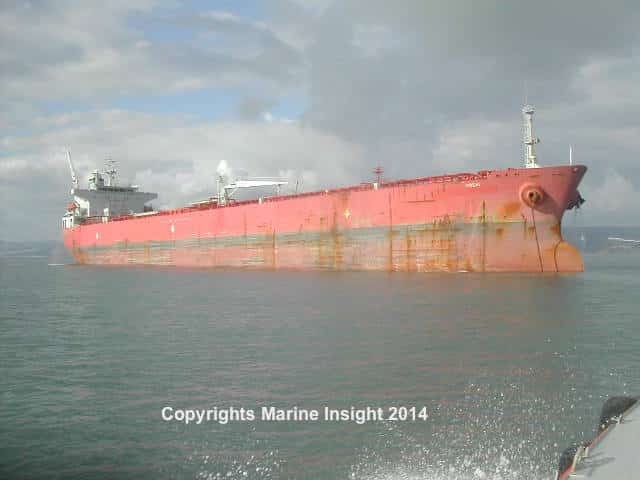Titanic’s Sister Ships – What Do You Know About Them?
RMS Titanic is the most famous shipwreck of all time, given its tragic tale has been showcased in the iconic movie starring Kate Winslet and Leonardo de Caprio.
The Titanic story has also been the subject of many books, plays and television shows. However, most people do not know about the Titanic’s sister ships and their fate.
RMS Olympic and HMHS Britannic were two sister ships of the Titanic, which are often overlooked. The trio was part of the Olympic-Class Liners of the White Star Line. When they entered the waters, they were said to be the biggest, most opulent, and safest vessels.

Harland & Wolff shipyard constructed these British Ocean Liners in the early 20th century to benefit the White Star Line in transatlantic passenger trade.
What Happened To Titanic, Olympic and Britannic?
Titanic was the 2nd and most famous of the sister ships. She was launched in 1911 and entered service the following year. She was called unsinkable. However, on her first voyage from Southampton to New York, she hit an iceberg and sank, taking over 1500 lives. The Titanic has become one of the most iconic disasters in the maritime world.
Olympic was the lead ship and had a 24-year career. After that, she was retired and sold for scrap in 1935.
Britannic went missing during the First World War after it hit a mine in the Aegean Sea before entering passenger service.
Though they didn’t have careers to boast about, these sister ships were quite popular ocean liners that enjoyed the distinction of being the biggest ships in the world and better than their contemporaries.
The Story of the RMS Olympic
Olympic remained the biggest British-constructed vessel for over two decades until the Queen Mary was commissioned in 1936. She began her maiden voyage on 14 June 19111 from Southampton to New York with 1313 passengers. Her captain was Edward Smith, who died the next year in the Titanic disaster, along with Designer Thomas Andrews, who shared the same fate.

Features of Titanic’s Sister Ship, RMS Olympic
Olympic was first in a class of superliners, so her first journey attracted worldwide attention. After she reached New York, she was opened to the people and saw 8000 visitors and 10,000 spectators who saw her leave the New York Harbour for her return journey.
Olympic was a luxury vessel, and most of her fittings, deck plans, and other onboard facilities were similar to those of the Titanic.
Her first-class guests had their cabins with bathrooms. They could eat at the dining saloon or the A La Carte Restaurant. The ship had a grand staircase characteristic of Olympic-class vessels and three lifts that ran behind the staircase, going to the E Deck.
The vessel also had a Georgian-style smoking room, a cafe, a gymnasium, a swimming pool, a Turkish bath, and other areas for entertainment and relaxation. The second-class passengers had a smoking room, a dining room, and a library. Third-class passengers were given reasonable accommodation compared to other ships.
Design and Style
Olympic was cleaner and sleeker than other ships of the time. Instead of bulky vents, she was fitted with small air vents with electric fans. She also had a low-pressure turbine instead of a steam engine installed on Cunard Line’s Mauretania.
Talking about the Titanic sister ship’s career, the RMS Olympic carried celebrities, wealthy guests and politicians across the Atlantic until she remained in service.
Olympic’s role when Titanic Sank
Olympic was returning from New York when its wireless operator received the distress call from the Titanic. She was around 505 miles west by south of Titanic’s position. Her captain ordered its engineers to be set to full power, and she headed to help in the rescue.
When she was 100 nm away from the Titanic’s location, Captain Rostron of RMS Carpathia sent her a message that they had reached the site of the accident and that coming here would be for nothing.
The Olympic offered to take some survivors from the Titanic. However, Rostron said that asking passengers to board a ship like the Titanic would cause them stress. Olympic then returned to her course in Southampton.
Served as a troop ship in WWI
Olympic also served as a troop ship in the First World War, earning her the nickname ‘Old Reliable’. To make her less visible, she was painted grey, her portholes blocked, and her deck lights turned off.
Her initial wartime journeys were filled with Americans stuck in Europe and eager to come home. Her bookings had already fallen due to the threat from German U-boats, and so the White Star Line withdrew it from commercial service. In 1914, she left for Glasgow on her last commercial voyage of the war with 153 passengers.
Accidents and Collisions
Olympic also met with many accidents and collisions in her service years, including a collision with a British warship in 1911. She almost missed hitting an iceberg the following year and struck a German sub in 1918.
Refits and Modernisation
Over the years, she underwent many modernisations and refits. Oil-fired boilers were installed onboard the Olympic, and she also got new propellors and extra lifeboats.
Faced Increased Competition from new ships
After the First World War, it operated as a passenger ship but faced rising competition from new and faster liners like the Cunard Line’s Queen Mary and Queen Elizabeth. Demand for trans-Atlantic travel decreased due to the Great Depression and the popularity of air travel.
Sold for scrap and dismantled
White Star Line merged with Cunard in 1934, so the Olympic became part of the newly formed Cunard-White Star Line. She made her last journey in March 1935 and retired from service in April 1935. Later that year, she was sold for scrap and ultimately dismantled in Jarrow, England, between 1935 and 1937.
The Tale of HMHS Britannic
Britannic was the third and last ship of the Olympic class of steamships belonging to the White Star Line. She was the youngest sister of Titanic and Olympic and was to enter her career as a trans-Atlantic passenger liner; however, fate had other plans.

Safest Among the Three Olympic Class Liners
She was launched before WWI began and was designed to be the safest among the three vessels, with major changes done during construction from lessons learnt after the Titanic Sinking in 1912. She was endowed with additional lifeboats, higher watertight compartments and a double hull for protection.
Began career as a hospital ship
Britannic could not serve as a commercial vessel when it entered service in 1915 when the British Government decided to employ passenger liners as troop transportation vessels in the Gallipoli Campaign. This was dangerous, and casualties increased, creating a need for massive hospital ships to treat and evacuate the wounded.
Hence, on 13th November 1915, Britannic entered service as a hospital ship. She was repainted with red crosses and a green stripe and renamed His Majesty’s Hospital Ship (HMHS) Britannic.
Around 3309 beds and many operating rooms were set up onboard. The common area on the upper deck was also changed into rooms for treating the injured. Cabins from B Deck were used as doctors’ accommodation. The first-class dining room and the reception room became operating theatres. She had a medical team of 101 nurses, 336 non-commissioned and 52 commissioned officers and a 675-member crew.
She made several successful voyages to places like Lemnos Island and the Dardanelles and transported soldiers from battlefields to England. When her military service was about to end in 1916, she went to Belfast for modification to transform into a passenger liner. The conversion took months before it was interrupted by the ship’s call back into military service.
Sinking of the Britannic after hitting a mine
Britannic left Southampton for Lemnos on 12 November 1916 on her sixth voyage to the Mediterranean Sea to pick up casualties from Greece. On 21 November 1916, she was shaken by an explosion after hitting a mine which was placed in the Kea Channel the previous month by an Imperial German Navy submarine. She sank 55 minutes later near the island of Kea.
The explosion damaged 6 watertight compartments and flooded the ship through the open portholes. The captain tried to beach the ship on the shores of Kea Island, but he could not because the ship had taken on a lot of water.
However, her rescue was easier than that of the Titanic, as the water temperature was higher, more lifeboats were available, and help was near when she sank. The first to come were fishermen from Kea and then ships like the HMS Scourge. Of the 1066 people on the ship, 1036 survived, and 30 died.
The Britannic is the world’s biggest intact shipwreck, 400 feet or 120 m deep in the Aegean Sea. It was discovered on 3 December 1975. The Britannic shared the popularity of the Titanic but became famous after its wreck was found. Her story was shown in a 2000 film called Britannic and a 2016 BBC documentary called Titanic’s Tragic Twin—the Britannic Disaster.
Differences between Titanic and her sister ships
The main difference between the three passenger liners was their size, design, and service.
Britannic was a bit larger than the other two, with a gross tonnage of 48,158 tons, while Titanic was 46,328 tons and Olympic was 45,324 tons. She also had a strong turbine engine and a bigger rudder.

The Titanic had minor improvements in design over the Olympic, like an enclosed promenade on Deck A and additional lifeboats. The Olympic underwent modification after the Titanic sinking and was endowed with a double hull and more lifeboats.
All three vessels had different careers. While the Titanic sank on her first voyage, Britannic could never function as a passenger liner and sank when it was serving as a hospital ship.
Conclusion
Titanic’s sister ships, Olympic and Britannic, did not experience the same tragedy as the Titanic but still had impressive careers of their own. They made vital contributions at a time when the world was preparing for war. They were leaders in their segment and symbols of wealth, opulence, comfort, and status. The finest minds of the time worked on constructing these pioneering ships, which have left a remarkable legacy in the maritime industry.
You might also like to read-
- 10 Interesting Titanic Engine Facts You Might Not Know
- Titanic Survivors – Some Noteworthy Stories You Must Know
- 10 Titanic Captain Facts You Might Not Know
- 30 Famous Shipwrecks In The World
- Maritime Accidents : The Sinking of Britannic Hospital Ship

About Author
Zahra is an alumna of Miranda House, University of Delhi. She is an avid writer, possessing immaculate research and editing skills. Author of several academic papers, she has also worked as a freelance writer, producing many technical, creative and marketing pieces. A true aesthete at heart, she loves books a little more than anything else.
Disclaimer :
The information contained in this website is for general information purposes only. While we endeavour to keep the information up to date and correct, we make no representations or warranties of any kind, express or implied, about the completeness, accuracy, reliability, suitability or availability with respect to the website or the information, products, services, or related graphics contained on the website for any purpose. Any reliance you place on such information is therefore strictly at your own risk.
In no event will we be liable for any loss or damage including without limitation, indirect or consequential loss or damage, or any loss or damage whatsoever arising from loss of data or profits arising out of, or in connection with, the use of this website.
Do you have info to share with us ? Suggest a correction
Disclaimer :
The information contained in this website is for general information purposes only. While we endeavour to keep the information up to date and correct, we make no representations or warranties of any kind, express or implied, about the completeness, accuracy, reliability, suitability or availability with respect to the website or the information, products, services, or related graphics contained on the website for any purpose. Any reliance you place on such information is therefore strictly at your own risk.
Related Articles
Daily Maritime News, Straight To Your Inbox
Sign Up To Get Daily Newsletters
Join over 60k+ people who read our daily newsletters
By subscribing, you agree to our Privacy Policy and may receive occasional deal communications; you can unsubscribe anytime.





BE THE FIRST TO COMMENT